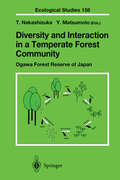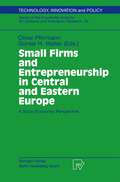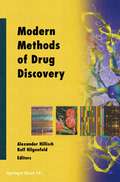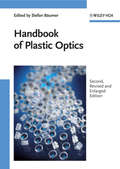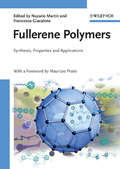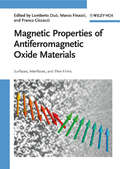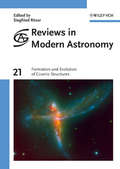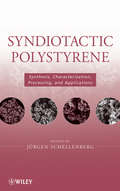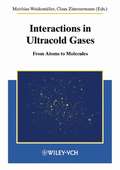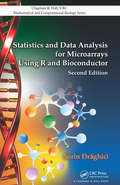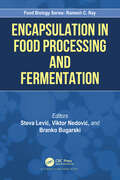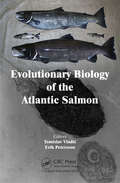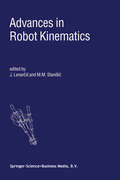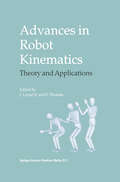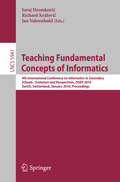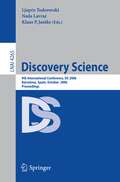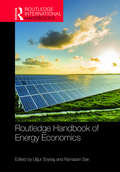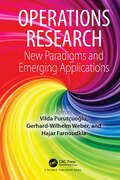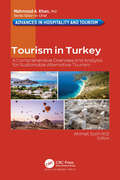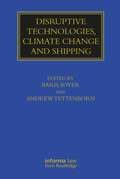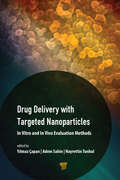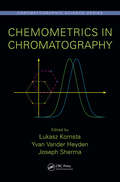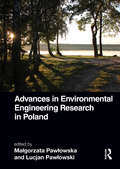- Table View
- List View
القانون في الطب 2
by ابن سينااعلم أن المرارة كيس معلّق من الكبد إلى ناحية المعدة من طبقة واحدة عصبانية ولها ضمّ إلى الكبد ومجرى فيه يجذب الخلط الرقيق الموافق لها والمرار الأصفر ويتصل هذا المجرى بنفس الكبد والعروق التي فيها يتكون الدم وله هناك شعب كثيرة غائصة وإن كان مدخل عمودها من التقعير والفم ومجرى إلى ناحية المعدة. والأمعاء ترسل فيه إلى ناحيتهما فضل الصفراء على ما ذكرناه في الكتاب الأول. وهذا المجرى يتصل أكثر شعبه بالاثني عشري وربما اتصل شيء صغير منه بأسفل المعدة وربما وقع الأمر بالضد فصار الأكبر المتصل بالوعاء الأغلظ إلى أسفل المعدة والأصغر إلى الاثني عشري. وفي أكثر الناس هو مجرى واحد متصل بالاثني عشري. وأما مدخل الأنبوبة المصاصة للمرارة في المرارة فقريب من مدخل أنبوبة المثانة في المثانة. ومن عادة الأطباء الأقدمين أن يسموا المرار الكيس الأصغر كما أنه من عادتهم أن يسموا المثانة الكيس الأكبر ومن المنافع في خلقة المرارة تنقية الكبد من الفضل الرغوي وأيضاً تسخينها كالوقود تحت القدر وأيضاً تلطيف الدم وتحليل الفضول وأيضاً تحريك البراز وتنظيف الأمعاء وشدّ ما يسترخي من العضل حوله وإنما لم يخلق في الأكثر للمرارة سبيل إلى المعدة لتغسل رطوباتها بالمرة كما تغسل بها في رطوبات الأمعاء لأن المعدة تتأذى بذلك وتغثّي ويفسد الهضم فيها بما يخالط الغذاء من خلط رديء ويأتيها من العرق الضارب. وللعصبة التي تتصل بالكبد شعبتان صغيرتان جداً والمرارة كالمثانة طبقة واحدة مؤلفة من أصناف الليف الثلاثة وإذا لم تجذب المرارة المرار أو جذبت فلم تستنق عنه حدثت آفات فإن الصفراء إذا احتبست فوق المرارة أو رمت الكبد وأورثت اليرقان وربما عفنت وأحدثت حميات رديئة. وإذا سالت إلى أعضاء البول بإفراط قرحت وإذا سالت إلى عضو ما أحدثت الحمرة والنملة وإذا دبت في البدن كله ساكنة غير هائجة أحدثت اليرقان وإذا سالت عن المرارة إلى الأمعاء بإفراط أورثت الإسهال المراري والسحج.
Diversity and Interaction in a Temperate Forest Community: Ogawa Forest Reserve of Japan (Ecological Studies #158)
by DrThe studies in the Ogawa Forest Reserve (OPR) were initiated by a group of plant ecologists and gradually expanded into a comprehensive project covering various aspects of biology, soil science, and silviculture. The project was integrated as part of the Forest Ecosystem Team under the BIO-COSMOS Program funded by the Ministry of Agriculture, Forestry and Fisheries. As the coordinators of the Forest Ecosystem Team, we are pleased that reports of the long-term studies carried out in the OFR are being published in this first volume on Japanese ecosystems in the Ecological Studies series. Scientists and researchers have made numerous contributions to the field of forest ecology during more than 10 years of studies in the OFR. Two reasons can be cited for the success of the project: scientists from various disciplines concen trated on a single target forest ecosystem, and the research continued over a rela tively long term. It is now recognized that ecological processes include compli cated mechanisms supported by interactions among organisms and large temporal variations. The researchers in the OFR project were motivated by their interest in the history of ecosystems and the interactions of diverse creatures in the forest.
Small Firms and Entrepreneurship in Central and Eastern Europe: A Socio-Economic Perspective (Technology, Innovation and Policy (ISI) #14)
by DrMuch of the research on transformation/transition in Central and Eastern European Countries (CEECs) focuses on macroeconomic issues (inflation, economic growth, employment ...). Little research has been devoted so far to microeconomic analysis. Recently the issue of new enterprises and firm founders has moved to the centre of economic and policy considerations. Readers of this book will learn about the role played by these firms in the transformation of central and eastern European countries. The book also includes contributions from Central and Eastern Europe on which little or no investigation has been performed until now (Yugoslavia, Romania, Slovakia).
Modern Methods of Drug Discovery (Experientia Supplementum #93)
by Dr Prof.Research in the pharmaceutical industry today is in many respects quite different from what it used to be only fifteen years ago. There have been dramatic changes in approaches for identifying new chemical entities with a desired biological activity. While chemical modification of existing leads was the most important approach in the 1970s and 1980s, high-throughput screening and structure-based design are now major players among a multitude of methods used in drug discov ery. Quite often, companies favor one of these relatively new approaches over the other, e.g., screening over rational design, or vice versa, but we believe that an intelligent and concerted use of several or all methods currently available to drug discovery will be more successful in the medium term. What has changed most significantly in the past few years is the time available for identifying new chemical entities. Because of the high costs of drug discovery projects, pressure for maximum success in the shortest possible time is higher than ever. In addition, the multidisciplinary character of the field is much more pronounced today than it used to be. As a consequence, researchers and project managers in the pharmaceutical industry should have a solid knowledge of the more important methods available to drug discovery, because it is the rapidly and intelligently combined use of these which will determine the success or failure of preclinical projects.
Handbook of Plastic Optics
by Stefan B 228 Umer Stefan Baumer Stefan B UmerA coherent overview of the current status of injection molded optics, describing in detail all aspects of plastic optics, from design issues to production technology and quality control. This updated second edition is supplemented by a chapter on the equipment and process of injection wells as well as a look at recent applications. The contributors, each one a leading expert in their discipline, have either a background in or strong ties to the industry, thus combining a large amount of practical experience. With its focus firmly set on practical applications, this is an indispensable reference for all those working in optics research and development.
Fullerene Polymers: Synthesis, Properties and Applications
by Nazario Mart 237 N Francesco Giacalone Maurizio PratoWritten by an outstanding team of experts in the interdisciplinary areas of research, this book is based on a new classification of the different types of fullerene polymers according to their chemical structures. It covers all aspects, from different classes, to their synthesis and applications in material science. Of great interest to polymer and synthetic chemists, but also for material scientists and industrial chemists.
Magnetic Properties of Antiferromagnetic Oxide Materials: Surfaces, Interfaces, and Thin Films
by Lamberto Du 242 Marco Finazzi Franco CiccacciThis first focused treatment on a hot topic highlights fundamental aspects as well as technological applications arising from a fascinating area of condensed matter physics. The editors have excellent track records and, in light of the broadness of the topic, retain the focus on antiferromagnetic oxides. They thus cover such topics as dichroism in x-ray absorption, non-magnetic substrates, exchange bias, ferromagnetic-antiferromagnetic interface coupling and oxide multilayers, as well as imaging using soft x-ray microscopy. The result is a very timely monograph for solid state physicists and chemists, materials scientists, electrical engineers, physicists in industry, physical laboratory technicians, and suppliers of sensors.
Physical and Chemical Aspects of Organic Electronics: From Fundamentals to Functioning Devices
by Christof W 246 LlOrganic molecules are currently being investigated with regard to their application as active components in semiconductor devices. Whereas devices containing organic molecules for the generation of light - organic light emitting diodes (OLED) - have already reached the market (they e.g. display information on mobile phones), transistors where organic molecules are used to actively control currents and voltages are still in the development stage. In this book the principle problems related to using organic materials as semiconductors and to construct functioning devices will be addressed. A particular emphasis will be put on the difference between inorganic semiconductors such as Si, Ge and GaAs and organic semiconductors (OSC). The special properties of such soft matter require particular approaches for processing characterization and device implementation, which are quite different from the approach used for conventional semiconductors.
Formation and Evolution of Cosmic Structures (Reviews in Modern Astronomy #21)
by Siegfried R 246 SerThis 21st volume in the series contains 15 invited reviews and highlight contributions presented during the 2008 International Scientific Conference of the German Astronomical Society on the topic of "New Challenges to European Astronomy", held in Vienna, Austria. The papers discuss a wide range of hot topics, including cosmology, high-energy astrophysics, astroparticle physics gravitational waves, extragalactic and stellar astronomy -- together representing the roadmap for modern astrophysical research.
Syndiotactic Polystyrene: Synthesis, Characterization, Processing, and Applications
by J 252 Rgen SchellenbergSyndiotactic Polystyrene (SPS), synthesized in a laboratory for the first time in 1985, has become commercialized in a very short time, with wide acceptance on the global plastics market. Written by leading experts from academia and industry from all over the world, Syndiotactic Polystyrene offers a comprehensive review of all aspects of SPS of interest to both science and industry, from preparation and properties to applications. This essential reference to SPS covers: The preparation of syndiotactic polystyrene by half-metallocenes and other transition metal catalysts The structure and fundamental properties, especially morphology and crystallization and solution behavior The commercial process for SPS manufacturing Properties, processing, and applications of syndiotactic polystyrenes Polymers based on syndiotactic polystyrenes, for example, by functionalization and modification, and nanocomposites Ideal for polymer chemists, physicists, plastics engineers, materials scientists, and all those dealing with plastics manufacturing and processing, this important resource provides the information one needs to compare, select, and integrate an appropriate materials solution for industrial use or research.
Interactions in Ultracold Gases: From Atoms to Molecules
by Matthias Weidem 252 Ller Claus ZimmermannArising from a workshop, this book surveys the physics of ultracold atoms and molecules taking into consideration the latest research on ultracold phenomena, such as Bose Einstein condensation and quantum computing. Several reputed authors provide an introduction to the field, covering recent experimental results on atom and molecule cooling as well as the theoretical treatment.
Statistics and Data Analysis for Microarrays Using R and Bioconductor (Chapman And Hall/crc Mathematical And Computational Biology Ser.)
by Sorin Dr 259 GhiciRichly illustrated in color, Statistics and Data Analysis for Microarrays Using R and Bioconductor, Second Edition provides a clear and rigorous description of powerful analysis techniques and algorithms for mining and interpreting biological information. Omitting tedious details, heavy formalisms, and cryptic notations, the text takes a hands-on,
Encapsulation in Food Processing and Fermentation (Food Biology Series)
by Steva Levi 263 Viktor Nedovi 263 Branko BugarskiFood technology has adopted new principles and practices that are rapidly changing the food sector. New foods are now available under more uniform standards and better quality control. Globalised food market offers opportunities for manufacturers to increase production and profit, and at the same time, consumers benefit from the choice of food products like never before. All this is possible only because of the innovations in the food sector. One of such innovations is encapsulation technology, which aims to preserve food quality, enhance the sensorial properties of food and increase the efficiency in food processing. This book discusses the uses of encapsulation technology in food practices and conventional processes and also highlights new directions in food processing. In the introductory chapters’ review of encapsulation technologies, carrier materials and criteria for their selection, analytical methods for characterisation of encapsulated products and some aspects of product design and process optimisation. The most important achievements of encapsulation technology in the food sector are reviewed in the later chapters related to encapsulation of food ingredients, food biocatalysts and examples of usage of encapsulated active ingredients in the dairy and meat industry, beverage production, etc. In addition, the implementation of nanotechnology in the food sector is reviewed, emphasizing the most important materials and technologies for the production of nanoencapsulates. The book is a valuable source of information on encapsulation technology, for academia and industry, especially the food sector, with the aim of enhancing knowledge transfer.
Evolutionary Biology of the Atlantic Salmon
by Tomislav Vladi 263 Erik Petersson Francisco Ucan-MarinAtlantic salmon (Salmo salar, L) is an anadromous species contributing to major fishery catches and comprising a significant part of the aquaculturally produced fish for human consumption. The aim of this book is to incite the interest in the field of knowledge gathered from a broad scope of disciplines that have investigated this fish species. Und
Advances in Robot Kinematics
by Jadran Lenar 269 I 269 M. M. StanisicThis book presents the most recent research advances in the theory, design, control and application of robotic systems, which are intended for a variety of purposes such as manipulation, manufacturing, automation, surgery, locomotion and biomechanics. The issues addressed are fundamentally kinematic in nature, including synthesis, calibration, redundancy, force control, dexterity, inverse and forward kinematics, kinematic singularities, as well as over-constrained systems. Methods used include line geometry, quaternion algebra, screw algebra, and linear algebra. These methods are applied to both parallel and serial multi-degree-of-freedom systems. The results should interest researchers, teachers and students, in fields of engineering and mathematics related to robot theory, design, control and application. All articles in the book were reported at the seventh international symposium on Advances in Robot Kinematics that was organised in June 2000 in the beautiful ancient Mediterranean town of Piran in Slovenia. The preceding symposia of the series took place in Ljubljana (1988), Linz (1990), Ferrara (1992), Ljubljana (1994), and Piran (1996), and Salzburg (1998).
Advances in Robot Kinematics: Theory and Applications
by Jadran Lenar 269 I 269 Federico ThomasThis book presents the most recent research advances in the theory, design, control, and application of robotic systems, which are intended for a variety of purposes such as manipulation, manufacturing, automation, surgery, locomotion, and biomechanics.
Teaching Fundamental Concepts of Informatics: 4th International Conference on Informatics in Secondary Schools - Evolution and Perspectives, ISSEP 2010, Zurich, Switzerland, January 13-15, 2010, Proceedings (Lecture Notes in Computer Science #5941)
by Juraj Hromkovi 269 Rastislav Královic Jan VahrenholdThe International Conference on Informatics in Secondary Schools: Evolution and Perspective (ISSEP) is an emerging forum for researchers and practitioners in the area of computer science education with a focus on secondary schools. The ISSEP series started in 2005 in Klagenfurt, and continued in 2006 in Vilnius, and in 2008 in Torun. ´ The 4th ISSEP took part in Zurich. This volume presents 4 of the 5 invited talks and 14 regular contributions chosen from 32 submissions to ISSEP 2010. The ISSEP conference series is devoted to all aspects of computer science teaching. In the preface of the proceedings of ISSEP 2006, Roland Mittermeir wrote: “ISSEP aims at educating ‘informatics proper’ by showing the beauty of the discipline, hoping to create interest in a later professional career in c- puting, and it will give answers di?erent from the opinion of those who used to familiarize pupils with the basics of ICT in order to achieve computer lit- acy for the young generation. ” This is an important message at this time, when several countries have reduced teaching informatics to educating about current softwarepackagesthatchangefromyeartoyear. ThegoalofISSEPistosupport teaching of the basic concepts and methods of informatics, thereby making it a subject in secondary schools that is comparable in depth and requirements with mathematics or natural sciences. As we tried to present in our book “Algori- mic Adventures.
Discovery Science: 9th International Conference, DS 2006, Barcelona, Spain, October 7-10, 2006, Proceedings (Lecture Notes in Computer Science #4265)
by Nada Lavra 269 Ljupco Todorovski Klaus P. JantkeThis book constitutes the refereed proceedings of the 9th International Conference on Discovery Science, DS 2006, held in Barcelona, Spain in October 2006, co-located with the 17th International Conference on Algorithmic Learning Theory, ALT 2006. The 23 revised long papers and the 18 revised regular papers presented together with five invited papers were carefully reviewed and selected from 87 submissions.
Routledge Handbook of Energy Economics (Routledge International Handbooks)
by U 287 Ur Soyta 351 Ramazan Sar 305Energy consumption and production have major influences on the economy, environment, and society, but in return they are also influenced by how the economy is structured, how the social institutions work, and how the society deals with environmental degradation. The need for integrated assessment of the relationship between energy, economy, environment, and society is clear, and this handbook offers an in-depth review of all four pillars of the energy-economy-environment-society nexus. Bringing together contributions from all over the world, this handbook includes sections devoted to each of the four pillars. Moreover, as the financialization of commodity markets has made risk analysis more complicated and intriguing, the sections also cover energy commodity markets and their links to other financial and non-financial markets. In addition, econometric modeling and the forecasting of energy needs, as well as energy prices and volatilities, are also explored. Each part emphasizes the multidisciplinary nature of the energy economics field and from this perspective, chapters offer a review of models and methods used in the literature. The Routledge Handbook of Energy Economics will be of great interest to all those studying and researching in the area of energy economics. It offers guideline suggestions for policy makers as well as for future research.
Operations Research: New Paradigms and Emerging Applications
by Vilda Purutçuo 287 Lu Gerhard Wilhelm Weber Hajar FarnoudkiaOperation Research methods are often used in every field of modern life like industry, economy and medicine. The authors have compiled of the latest advancements in these methods in this volume comprising some of what is considered the best collection of these new approaches. These can be counted as a direct shortcut to what you may search for. This book provides useful applications of the new developments in OR written by leading scientists from some international universities. Another volume about exciting applications of Operations Research is planned in the near future. We hope you enjoy and benefit from this series!
Tourism in Turkey: A Comprehensive Overview and Analysis for Sustainable Alternative Tourism (Advances in Hospitality and Tourism)
by Ahmet Salih 304 KizTourism in Turkey: A Comprehensive Overview and Analysis for Sustainable Alternative Tourism is an informative study that analyzes the Turkish tourism from a variety of different perspectives and sheds light on its vast economic and social impacts. The volume takes into account Turkey’s popularity as a tourism destination that attracts many visitors, compared to the other popular destinations, yet its per capita earnings is low and suffers from declining foreign visitors. This volume emphasizes sustainable alternative tourism as a way forward. The Turkish hospitality and travel sector contribute significantly to the country’s GDP and is responsible for a considerable level of employment in Turkey. The volume discusses the development stages of tourism sector in Turkey in the light of policy changes that parallel the economic, political, social, and administrative transformations in Turkey. With the country’s favorable location, existing potential, mega projects, and ambitious targets set for 2023, the tourism sector needs to implement sustainable tourism measures in order to grow.
Disruptive Technologies, Climate Change and Shipping (Maritime and Transport Law Library)
by Bar 305 351 Soyer Andrew TettenbornThis book analyses the impact of two vital and contemporary developments on shipping law and practice: disruptive technologies and climate change. It considers the impact of these new technologies, honing in on likely emerging issues and unresolved questions, especially about existing and potential private law liabilities and concentrates, from the point of view of English, EU and international law, on the legal implications of climate change and associated environmental risks in the shipping sector. Written by a contributor team drawn from the most experienced and knowledgeable academics and practitioners in shipping law, this treatment of these growing areas of practice will be of great use to lawyers and administrators across the world.
Drug Delivery with Targeted Nanoparticles: In Vitro and In Vivo Evaluation Methods
by Y 305 Lmaz Çapan Adem Sahin Hayrettin TonbulNanotechnology has the potential to change every part of our lives. Today, nanotechnology-based products are used in many areas, and one of the most important areas is drug delivery. Nanoparticulate drug delivery systems not only provide controlled delivery of drugs and improved drug solubility but also improve drug efficiency and reduce side effects via targeting mechanisms. However, compared with conventional drug delivery systems, few nanoparticle-based products are on the market and almost all are nontargeted or only passively targeted systems. In addition, obtaining targeted nanoparticle systems is quite complex and requires several evaluation mechanisms. This book discusses the production, characterization, regulation, and currently marketed targeted nanoparticle systems in a broad framework. It provides an overview of targeted nanoparticles’ (i) in vitro characterization, such as particle size, stability, ligand density, and type; (ii) in vivo behavior for different targeting areas, such as tumor, brain, and vagina; and (iii) current advances in this field, including clinical trials and regulation processes.
Chemometrics in Chromatography (Chromatographic Science Series)
by 321 Ukasz Komsta Yvan Vander Heyden Joseph ShermaChemometrics uses advanced mathematical and statistical algorithms to provide maximum chemical information by analyzing chemical data, and obtain knowledge of chemical systems. Chemometrics significantly extends the possibilities of chromatography and with the technological advances of the personal computer and continuous development of open-source software, many laboratories are interested in incorporating chemometrics into their chromatographic methods. This book is an up-to-date reference that presents the most important information about each area of chemometrics used in chromatography, demonstrating its effective use when applied to a chromatographic separation.
Advances in Environmental Engineering Research in Poland
by Ma 322 Gorzata Paw 322 Owska Lucjan Paw 322 OwskiA side-effect of numerous anthropogenic activities involves unfavourable changes in the natural environment. The acquisition of natural resources, especially fossil fuels, solid waste and wastewater production, as well as emission of gases and particulate matter from industrial plants and means of transport contribute to disturbances in the natural cycles of elements between different parts of the environment. Local changes lead to global effects, changing the composition of atmosphere, its capacity for absorbing the infrared radiation and temperature, which has further repercussions in the form of weather anomalies, melting glaciers, flooding, migration or extinction of species, social problems, etc. These global changes can be mitigated by local remedial actions, simultaneously taken all over the world, including Poland. Only the joint efforts of communities from different countries can be successful in preserving the world as we know it for the future generations. Realisation of this task requires the cooperation of experts across many fields of science, environmental engineering being one of most relevant. It comprises the engineering actions taken to preserve the balance of the natural environment or restore it if degradation has occurred. This monograph presents several key issues related to the actions aimed at mitigating the negative impact on the environment connected with the acquisition and transport of energy, management of municipal and industrial wastes, as well as the impact of the industry on the aquatic and soil environment. This book is dedicated to academics, engineers, and students involved in environmental engineering, who are following the advances in the research on environmental aspects of energy production and waste management.

